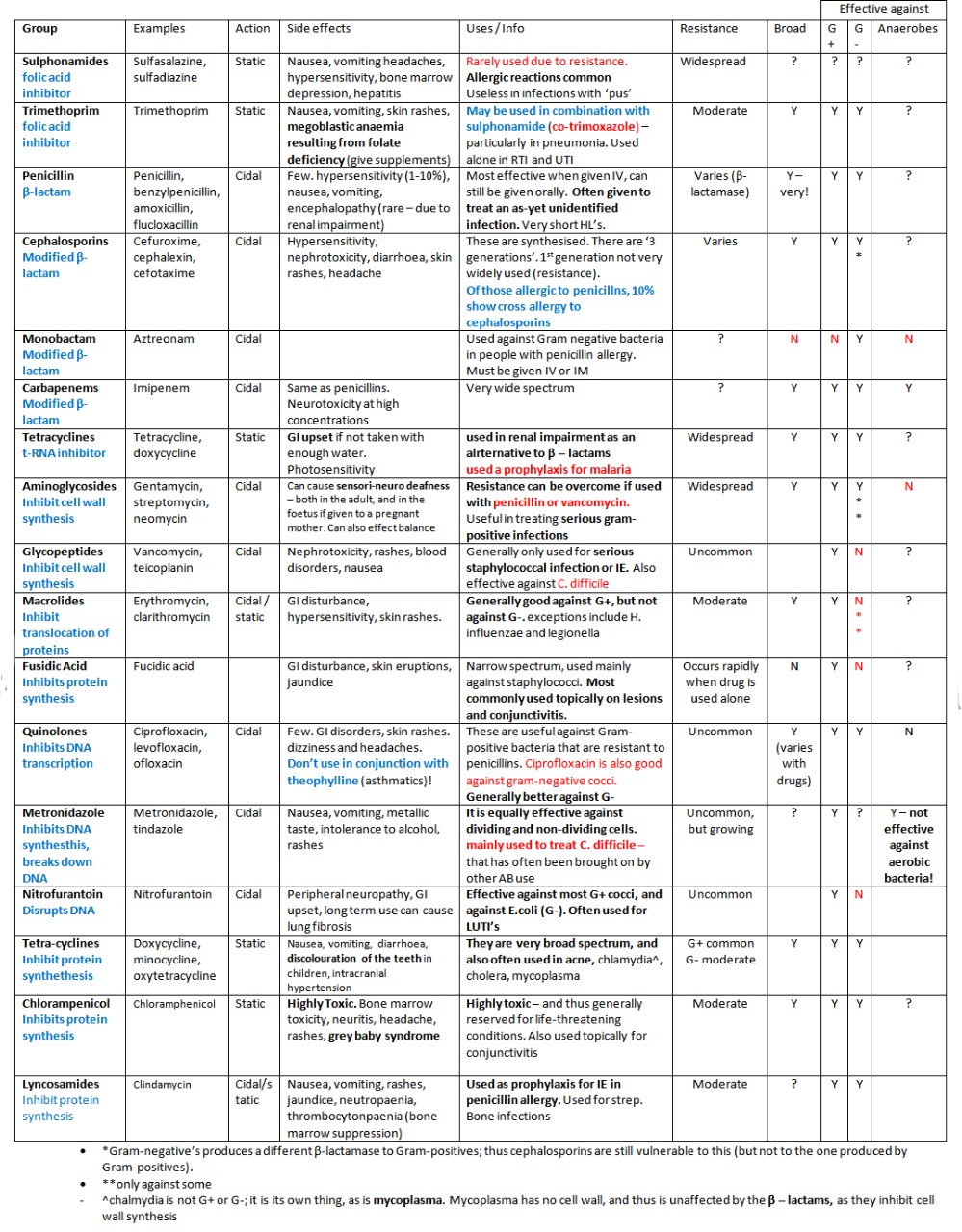
Beta-Lactams Beta-lactams are a wide range of antibiotics, the first of which to be discovered was penicillin, which Alexander Fleming identified in 1928. All beta-lactam antibiotics contain a beta-lactam ring; they include penicillins, such as amoxicillin, and cephalosporins. Bacteria can develop resistance to beta-lactams via several routes, including the production of enzymes that break down the beta-lactam ring. In the NHS, penicillins are the most commonly prescribed antibiotics, with amoxicillin being the most common in the class. Sulfonamides Prontosil, a sulfonamide, was the first commercially available antibiotic, developed in 1932. In the present day, sulfonamides are rarely used, partially due to the development of bacterial resistance, but also due to concern about unwanted effects such as damage to the liver of patients. Aminoglycosides Aminoglycosides inhibit the synthesis of proteins in bacteria, eventually leading to cell death. In the treatment of tuberculosis, streptomycin was the first drug found to be effective; however, due to issues with toxicity of aminoglycosides, their present day use is limited. Tetracyclines Tetracyclines are broad-spectrum antibiotics, active against both Gram-positive and Gram-negative bacteria. Their use is decreasing to increasing instances of bacterial resistance; however, they still find use in treatment of acne, urinary tract, and respiratory tract infections, as well as chlamydia infections. Chloramphenicol Another broad-spectrum antibiotic, chloramphenicol also acts by inhibiting protein synthesis, and thus growth and reproduction of bacteria. Due to the possibility of serious toxic effects, in developed countries it is generally only used in cases where infections are deemed to be life-threatening, although it is a much more common antibiotic in developing countries due to its low cost and availability. Macrolides Macrolides' effectiveness is marginally broader than that of penicillins, and they have been shown to be effective against several species of bacteria that penicillins are not. Whilst some bacterial species have developed resistance to macrolides, they are still the second most commonly prescribed antibiotics in the NHS, with erythromycin being the most commonly prescribed in the class. Glycopeptides Glycopeptides include the drug vancomycin – commonly used as a ‘drug of last resort’, when other antibiotics have failed. There are strict guidelines on the circumstances in which vancomycin can be used to treat infections, in order to delay the development of resistance. The bacteria against which glycopeptides are active are otherwise somewhat limited, and in most they inhibit growth and reproduction rather than killing bacteria directly. Oxazolidinones Oxazolidinones are active against Gram-positive bacteria, and act by inhibiting protein synthesis, and hence growth and reproduction. Linezolid, approved for use in 2000, was the first marketed antibiotic in the class, and resistance seems to be developing relatively slowly since its introduction. Ansamycins This class of antibiotics are effective against Gram-positive bacteria, as well as some Gram-negative bacteria. A subclass of antibiotics, rifamycins, are used to treat tuberculosis and leprosy. Uncommonly, ansamycins can also demonstrate anti-viral activity. Quinolones Quinolones are widely used for urinary tract infections, as well as other hospital-acquired infections where resistance to older classes of antibiotics is suspected. Resistance to quinolones can be particularly rapid in its development; in the US, they were the most commonly prescribed antibiotics in 2002, and their prescription for unrecommended conditions or viral infections is also thought to be a significant contributor to the development of resistance. Streptogramins Streptogramins are unusual in that they are usually administered as a combination of two antibiotic drugs from the different groups within the class; combined they have a synergistic effect and are capable of directly killing bacteria cells. They are often used to treat resistant infections, although resistance to the streptogramins themselves has also developed. Lipopeptides Discovered in 1987, lipopeptides are the most recent class of antibiotics. Daptomycin is the most commonly used member of the class; it has a unique mechanism of action, disrupting several aspects of cell membrane function in bacteria. This unique mechanism of action also seems to be advantageous in that, currently, incidences of resistance to the drug seem to be rare – though they have been reported.
Read more at: https://forum.facmedicine.com/threads/antibiotics-types-and-mechanism-of-action.35444/?fbclid=IwAR3B7Qywhg2MPwJBDMeacMMjeXM45wOpNcxFff8Eq6gHpOC1yaqdWoT-FMs
-
Votre commentaire
Votre commentaire s'affichera sur cette page après validation par l'administrateur.
Ceci n'est en aucun cas un formulaire à l'adresse du sujet évoqué,
mais juste un espace d'opinion et d'échange d'idées dans le respect.




Posté par : DocteurGasmi
Source : www.forum.facmedecine.com